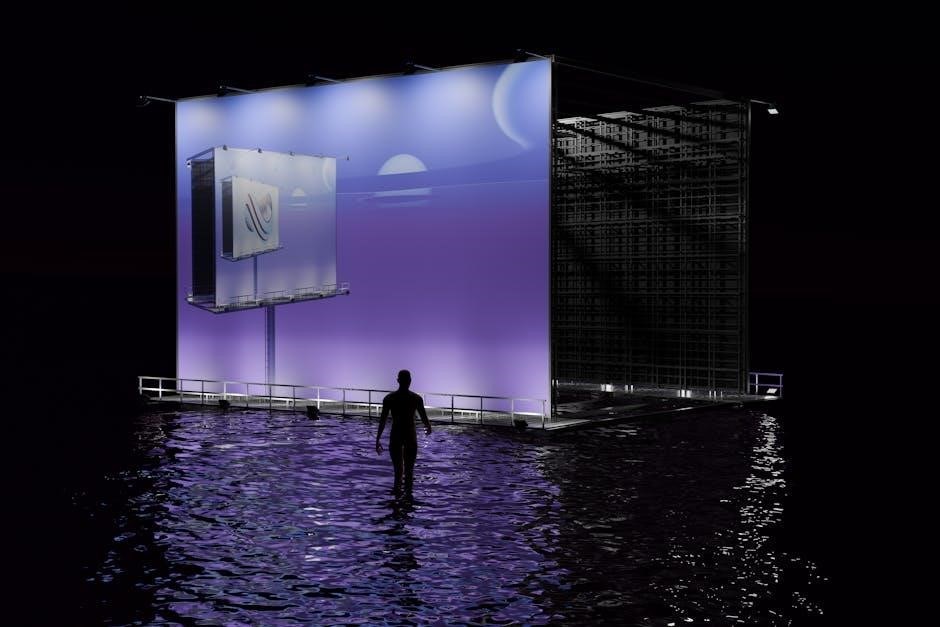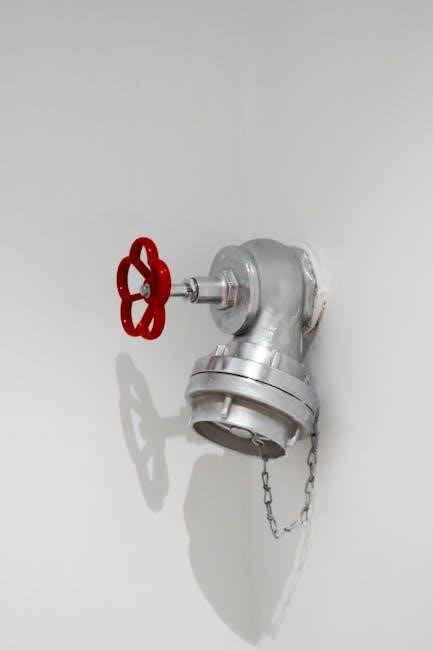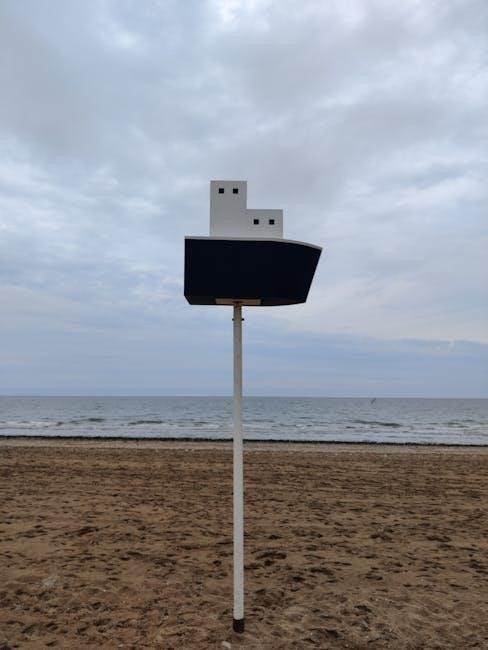Rheem tankless water heaters offer efficient, continuous hot water solutions with space-saving designs. They reduce energy consumption and provide consistent performance, making them a popular choice for modern homes and businesses.

1.1 What Are Tankless Water Heaters?
Tankless water heaters are innovative appliances that heat water on demand without storing it in a tank. Unlike traditional tank-style heaters, they provide hot water continuously as it flows through the unit. These systems are typically wall-mounted and use either gas or electricity to heat water instantly. They are known for their energy efficiency, as they only consume power when hot water is needed. Tankless water heaters are compact, space-saving, and ideal for homes with limited space. They also offer long-term cost savings due to lower energy consumption and longer lifespan compared to conventional water heaters. This makes them a popular choice for modern households seeking reliable and efficient hot water solutions.
1.2 Benefits of Choosing Rheem Tankless Water Heaters
Rheem tankless water heaters offer numerous benefits, including energy efficiency, space savings, and continuous hot water supply. They heat water only when needed, reducing energy consumption and lowering utility bills. With a compact design, they free up valuable space in homes. Rheem models are durable, lasting up to 20 years, and require minimal maintenance. Advanced features like temperature controls and eco-friendly operation enhance user experience. Rheem’s reputation for reliability and customer support adds peace of mind. These heaters are ideal for households seeking a modern, efficient, and long-lasting solution for their hot water needs, making Rheem a top choice for many homeowners.

Pre-Installation Considerations
Before installing a Rheem tankless water heater, assess your water and energy needs, choose the right model, and ensure compliance with local plumbing and electrical codes.
2.1 Assessing Water and Electrical Requirements
Assessing water and electrical requirements is crucial for a successful Rheem tankless water heater installation. Calculate your household’s water usage in gallons per minute (GPM) and desired temperature rise to ensure the heater meets your needs. Electrical requirements include verifying voltage, power ratings, and circuit capacity. Ensure your electrical panel can support the heater’s power demand, which may require upgrades. Rheem models vary in power consumption, so matching your system to your home’s capacity is essential. Proper assessment ensures efficient operation, avoids overload risks, and guarantees compliance with safety standards. This step is foundational for a trouble-free installation process.
2.2 Choosing the Right Model for Your Needs
Selecting the right Rheem tankless water heater model involves evaluating your household’s specific needs. Consider factors like household size, peak hot water demand, and available space. Rheem offers various models with different flow rates and energy efficiencies. Assess your water usage patterns and desired temperature rise to match the heater’s capacity. For example, homes with higher demand may require a larger unit, while smaller homes can opt for compact models. Fuel type (gas or electric) and venting requirements also play a role. Rheem’s EcoNet technology and Wi-Fi-enabled models provide advanced controls for customization. Ensure the model aligns with your budget and energy efficiency goals for optimal performance.
2.3 Understanding Local Plumbing and Electrical Codes
Before installing a Rheem tankless water heater, it’s crucial to understand and comply with local plumbing and electrical codes. These regulations ensure safety and proper functionality. Verify requirements for water pressure, venting, and electrical connections. Local codes may dictate specific materials or installation practices. Additionally, check if permits are needed and schedule inspections. Non-compliance could lead to safety hazards or legal issues. Rheem models are designed to meet various standards, but local adaptations may be necessary. Always consult with licensed professionals to ensure adherence to all regulations and safety guidelines during the installation process.

Installation Steps
Installation involves mounting the unit, connecting gas, water, and electrical lines, ensuring proper ventilation, and securing all connections. Follow manufacturer guidelines for a safe setup.
3.1 Mounting the Rheem Tankless Water Heater
Mounting a Rheem tankless water heater requires careful planning to ensure proper installation. Choose a dry, well-ventilated area, preferably near the water supply to minimize pipe length. Use sturdy anchors suitable for the wall type to secure the unit firmly. Follow local building codes and Rheem’s guidelines for correct placement, ensuring the heater is at a safe height and accessible for maintenance. Proper mounting prevents leaks, ensures efficiency, and adheres to safety standards; Always double-check the setup before proceeding to the next installation steps.
3.2 Connecting Ventilation, Gas, and Water Lines
Correctly connecting ventilation, gas, and water lines is critical for safe and efficient operation. Ensure the ventilation system is properly installed according to local codes, using approved materials like Category III venting. Gas lines must be sized correctly and securely connected to avoid leaks, with proper shut-off valves nearby. Water lines should be configured to prevent backflow, using high-quality piping materials. Double-check all connections for tightness and ensure the system is properly vented to avoid gas build-up. Follow Rheem’s specifications and local plumbing standards to guarantee a safe and efficient installation. Proper connections are essential for optimal performance and safety.
3.3 Installing Electrical Connections
Proper electrical connections are essential for the safe and efficient operation of your Rheem tankless water heater. Begin by ensuring the power supply matches the heater’s specifications, typically requiring a dedicated 240-volt circuit. Use appropriately sized wire gauge to prevent overheating and ensure reliable power delivery. Install a dedicated circuit breaker or switch near the unit for easy access. Ground the system according to local electrical codes to prevent shock hazards. Connect the wires to the terminal block carefully, following the manufacturer’s wiring diagram. Double-check all connections for tightness and test the system to ensure proper function. Always adhere to local electrical codes and safety standards during installation.
Post-Installation Steps
After installation, test the system, set temperature and flow controls, and perform safety checks to ensure proper function and efficiency of your Rheem tankless water heater.
4.1 Testing the System
After installation, turn on the Rheem tankless water heater and check for leaks in all connections. Ensure proper ventilation and gas line functionality. Run a full cycle of hot water through all taps to verify consistent temperature and flow. Test the unit under various demand scenarios to confirm it meets your household needs. Check error codes on the control panel to ensure everything operates smoothly. If any issues arise, consult the user manual or contact a professional. Proper testing ensures safety and optimal performance of your tankless water heater.
4.2 Setting Up Temperature and Flow Controls
After installation, adjust the temperature and flow controls on your Rheem tankless water heater to meet your preferences. Set the desired temperature between 100°F and 140°F using the control panel. Ensure the flow rate is balanced to avoid excessive water pressure. Check the manual for specific guidance on calibrating these settings. Test the system under various usage conditions to ensure consistent performance. If needed, fine-tune the controls for optimal comfort and efficiency. Proper setup ensures safe operation and maximizes energy savings. Always refer to the user manual for detailed instructions on adjusting these settings.
4.3 Performing Safety Checks
After installation, conduct thorough safety checks to ensure your Rheem tankless water heater operates safely and efficiently. Inspect gas lines for leaks using a gas detector or soap solution. Verify proper ventilation to prevent carbon monoxide buildup. Check electrical connections for secureness and ensure all components are grounded. Test the system under various water flow rates to identify any potential issues. Ensure the temperature setting does not exceed safe levels to prevent scalding. Review the user manual for specific safety recommendations. Perform a final inspection of all connections and controls before regular use. Regular safety checks help prevent accidents and maintain optimal performance.

Maintenance and Troubleshooting
Regular maintenance ensures optimal performance. Clean filters, check for leaks, and monitor temperature settings. Address common issues like error codes or low water flow promptly to maintain efficiency and safety.
5.1 Regular Maintenance Tips
Regular maintenance is crucial for the longevity and efficiency of your Rheem tankless water heater. Start by cleaning the air intake and venting system to ensure proper airflow. Check for any blockages or debris that might obstruct the water flow. Descale the heat exchanger every 6-12 months to remove mineral buildup, especially in areas with hard water. Inspect the temperature and pressure relief valve annually and replace it if necessary. Additionally, monitor the unit’s error codes and reset them as needed. Always refer to the user manual for specific maintenance recommendations tailored to your model.
5.2 Common Issues and Solutions
Common issues with Rheem tankless water heaters include error codes, inconsistent water temperature, and reduced flow rate. Error codes often indicate specific problems, such as faulty sensors or ignition issues. Temperature fluctuations may result from improper sizing or scaling in the heat exchanger. To resolve these, descale the unit regularly and ensure proper installation. If the flow rate is low, check for blockages in water lines or filters. Resetting the unit or consulting the user manual can often address minor issues. For persistent problems, contact a certified technician to diagnose and repair. Regular maintenance can help prevent these issues and ensure optimal performance.
